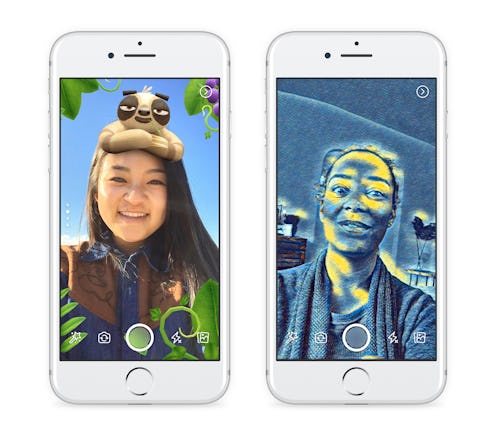Life
How To Use Facebook's New Stories
Oh, snap. Facebook has made a bold move, people: It's updated with a new Stories feature, similar to Snapchat and Instagram. If you're wondering how to use Facebook Stories, I have promising news: It's as simple and user-friendly as it is on the other platforms, sending a serious message to Snapchat especially: Facebook isn't going to take this laying down. Burn!
While Facebook is one of the most visited websites in the world, it still has competition — and competition that sometimes gives it a run for its money, in fact. For instance, Facebook posting has seen an overall decline because people don't always want to share things with everybody. The new Stories feature offers another solution to this problem, while simultaneously putting Facebook up there with the likes of Instagram, Snapchat, and the watch-them-before-they-disappear photos and videos. So, how exactly do Facebook Stories work?
First off, this latest update (which started rolling out on mobile this morning) has three parts: Stories, Direct, and Camera. Stories includes a horizontal display at the top of your newsfeed, showing the current stories. Facebook ranks these based on how close it thinks you are to those people.
To make your own story, swipe right on your newsfeed or tap on the camera in the upper lefthand corner. Once you're done recording, you have two options: The first is to share it with everybody, in which case it ends up in that horizontal display.
With the second option, you can send it to a group of friends of your choosing, and it'll appear in Direct — another new part of this update within the Facebook app that works similarly to Insta's DMs. Facebook Stories in your newsfeed disappear after 24 hours. Stories in Direct are able to be replayed by recipients. However, once the conversation ends, the content disappears.
Similar to the other platforms, you can decorate the images with text, stickers, and more. They won't post to your timeline unless you put them there.
The third part of the equation comes in the form of animated face filters (finally!). Facebook Camera introduces dozens of effects, like masks, frames, and interactive filters. It'll also have branded filters for movies that kids and teens love (like Power Rangers), hopefully drawing more of that age group to the platform. If all of this sounds reminiscent of Snapchat filters, that's because it is.
When Facebook speaks, we usually shut up and listen, and for a good reason: It's because they know what they're doing. And Stories has already shown to be a winner. Facebook has actually been testing Stories since August; and in the markets where it goes lives, people end up sharing more often. It's a sign of a momentous shift in the way we communicate — a widespread transition from words to artistic images and videos.
